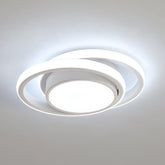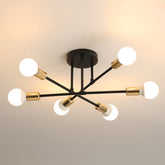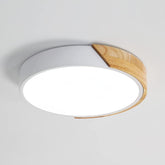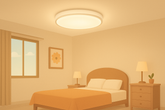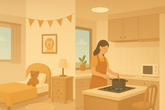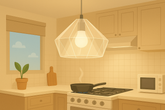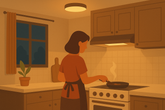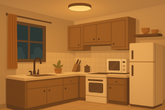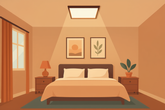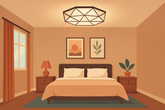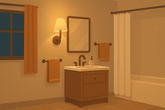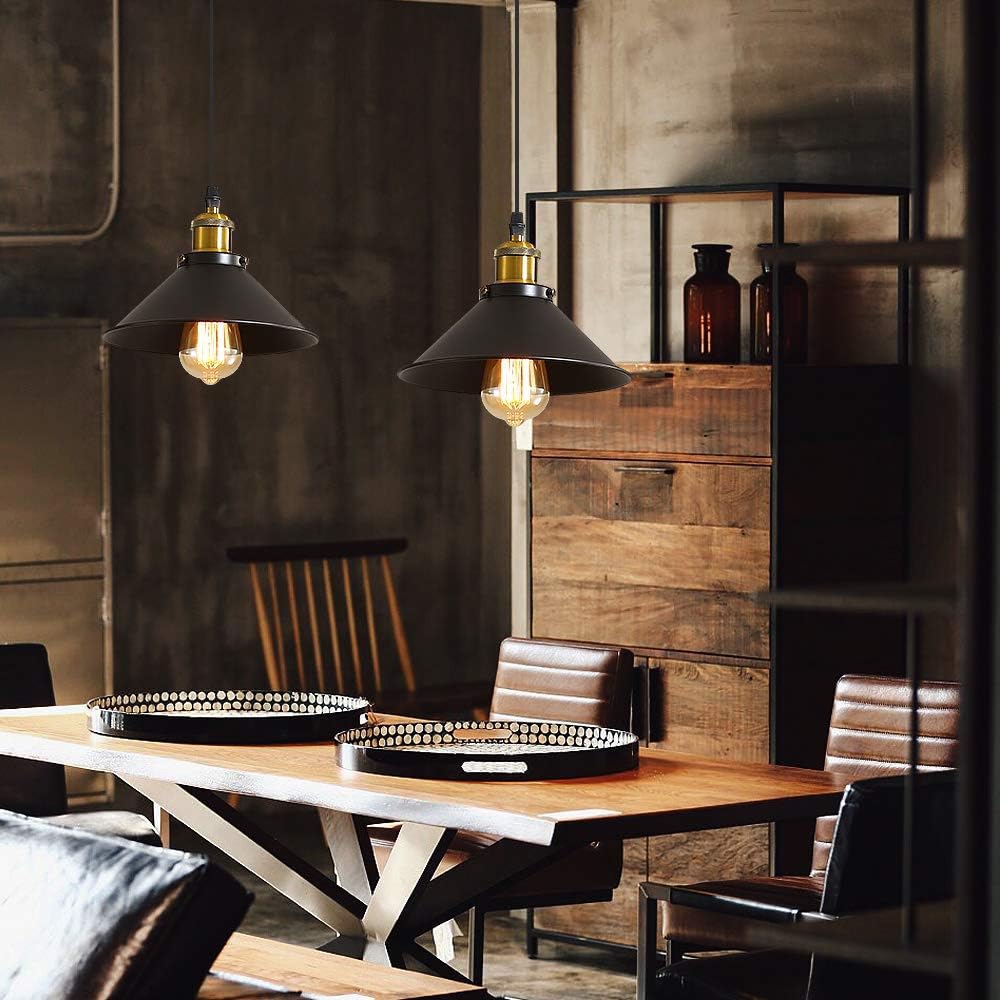Ceiling Lights: Complete Guide to Materials and Their Characteristics
1.1 Ceiling Lights in Plastic
Plastic is the most common and economical choice. It includes regular plastic, acrylic, and polycarbonate (PC).
Regular Plastic
Features: inexpensive, lightweight, available in many colors.
Advantages: low cost, easy installation, not easily broken.
Disadvantages: poor heat resistance, prone to yellowing, short lifespan.
Suitable for: temporary housing or rental apartments with limited budget.
Acrylic
Features: PMMA with light transmission over 92%.
Advantages: excellent transparency similar to glass but lighter; impact-resistant; durable; highly moldable.
Disadvantages: relatively weak heat resistance, risk of deformation under long-term heat.
Suitable for: modern living rooms, bedrooms, or studies.
Polycarbonate (PC)
Features: engineering plastic with excellent thermal and impact resistance.
Advantages: withstands -40 °C to 130 °C; 250 times stronger than glass; UV resistant; flame retardant.
Disadvantages: higher cost, surface scratches easily.
Suitable for: kitchens, bathrooms, or areas with higher safety requirements.
1.2 Ceiling Lights in Metal
Metal ceiling lights are valued for their modern look and durability. Common materials include aluminum, steel, and copper.
Aluminum
Lightweight, corrosion-resistant, easy to process.
Advantages: light weight, good heat dissipation, rust-free, diverse finishes.
Disadvantages: less premium feel, may deform.
Suitable for: modern or industrial living and dining rooms.
Steel
Features: strong, durable, solid appearance.
Advantages: high strength, not easily deformed, suitable for industrial style, moderate price.
Disadvantages: heavy, prone to rust without proper coating.
Suitable for: industrial or vintage-inspired interiors.
Copper
Features: luxurious and durable with collectible value.
Advantages: elegant metallic luster, corrosion-resistant, long lifespan.
Disadvantages: very expensive, heavy, requires professional installation.
Suitable for: high-end, traditional, or vintage style interiors.
1.3 Ceiling Lights in Glass
Glass ceiling lights are popular for their excellent transparency and refined look. Common types include regular glass, tempered glass, and frosted glass.
Regular Glass
Excellent light transmission, affordable, easy to clean.
Disadvantages: heavy, fragile, potential safety risk.
Suitable for: contemporary living and dining rooms.
Tempered Glass
4–5 times stronger than regular glass, breaks into safe small particles.
Advantages: high safety, excellent heat resistance.
Disadvantages: more expensive, still heavy.
Suitable for: households with children or safety-conscious families.
Frosted Glass
Soft, diffused light with decorative effect.
Advantages: gentle lighting, stylish, resists fingerprints.
Disadvantages: lower transparency, requires higher wattage.
Suitable for: bedrooms, studies, or spaces needing soft light.
1.4 Ceiling Lights in Crystal
Crystal lights represent luxury and create sparkling light effects.
Natural Crystal
Features: high purity, brilliant shine.
Advantages: dazzling refraction, high decorative and collectible value.
Disadvantages: extremely expensive, heavy, complex installation.
Suitable for: villas, large living rooms, luxury interiors.
1.5 Ceiling Lights in Fabric
They add a warm and cozy atmosphere to interiors, available in cotton, linen, and silk.
Cotton
Soft, breathable, moderately priced.
Advantages: comfortable texture, soft lighting, cozy mood.
Disadvantages: collects dust, not heat-resistant, needs regular cleaning.
Suitable for: bedrooms, children’s rooms, or studies.
Linen
Natural texture, durable.
Advantages: eco-friendly, wear-resistant, breathable.
Disadvantages: wrinkles easily, harder to clean, higher price.
Suitable for: living rooms, bedrooms.
Silk
Luxurious and shiny.
Advantages: elegant, soft drape, vibrant colors.
Disadvantages: expensive, delicate, requires care.
Suitable for: elegant bedrooms or living rooms.
1.6 Ceiling Lights in Wood
They bring natural texture and warmth, ideal for organic or nature-inspired interiors.
Solid Wood
Natural grain, durable, eco-friendly.
Advantages: robust, elegant, long lifespan.
Disadvantages: expensive, moisture-sensitive, requires maintenance.
Suitable for: living rooms, bedrooms.
Engineered Wood
Cheaper, available in many designs.
Advantages: affordable, stable, resistant to deformation.
Disadvantages: less premium, lower eco-performance.
Suitable for: budget-conscious households seeking natural style.
Bamboo
Eco-friendly, unique texture, oriental charm.
Advantages: sustainable, strong, resistant.
Disadvantages: prone to insects, needs special treatment, relatively costly.
Suitable for: living rooms, studies.
